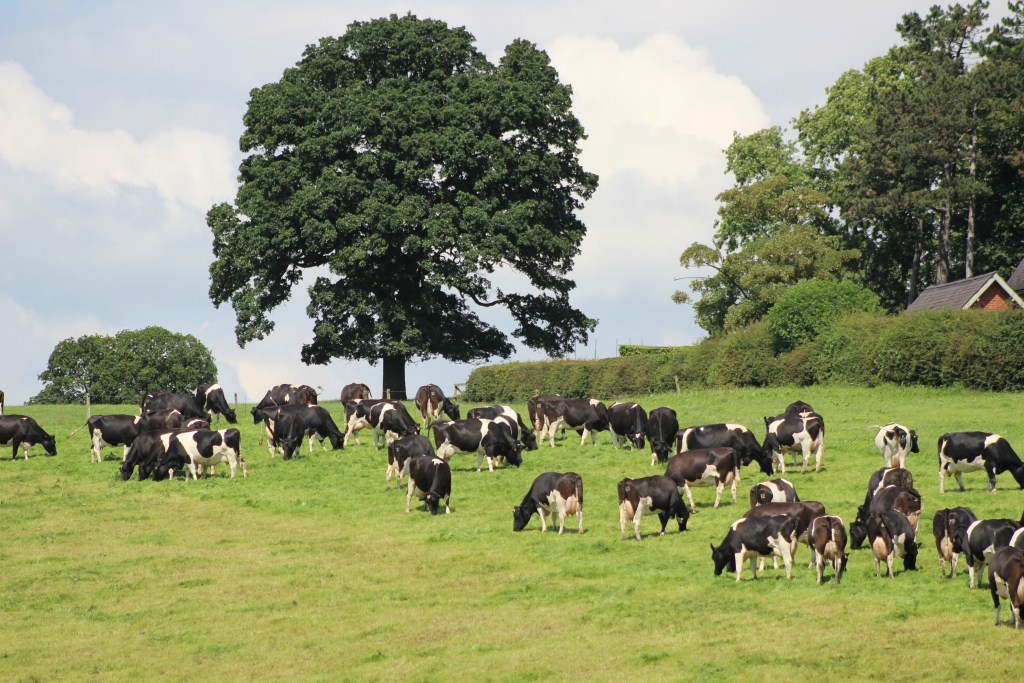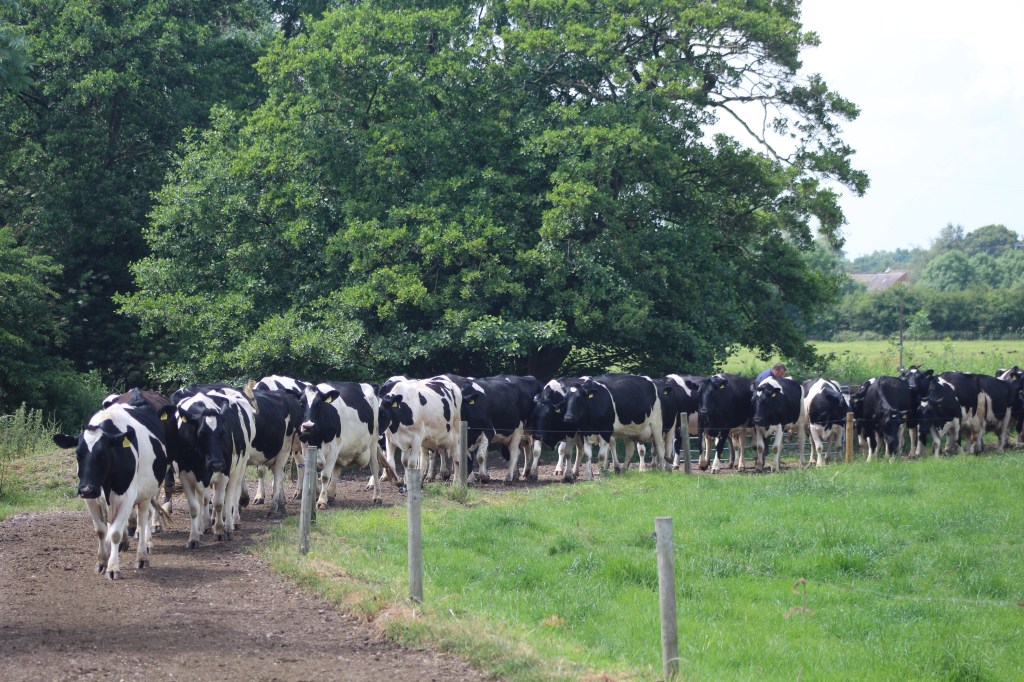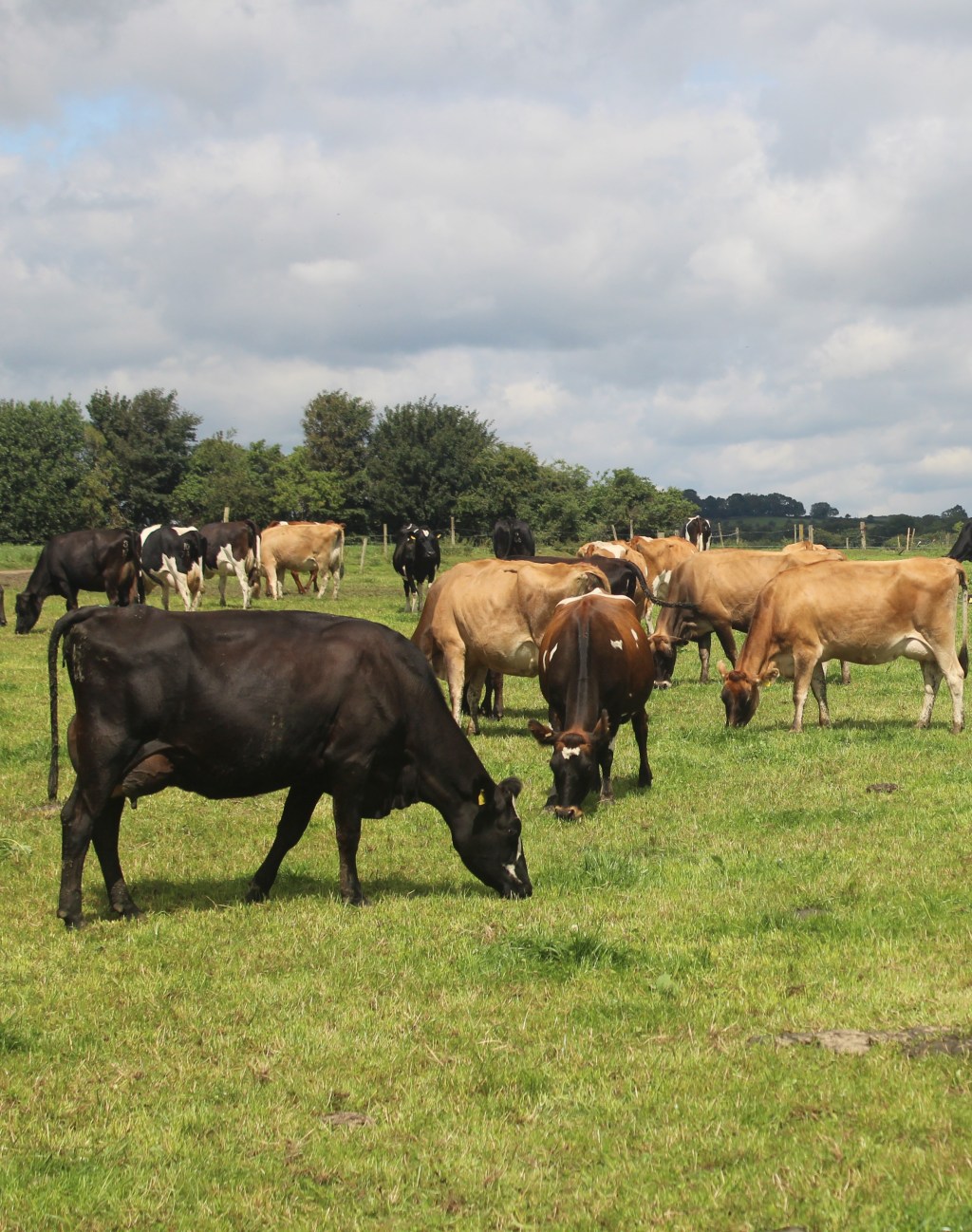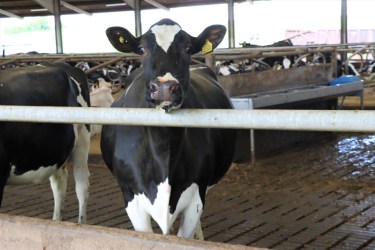Maximising profitability is a key goal for every farm, and one way to achieve this is by improving the calving interval of your dairy herd. A shorter, more consistent calving interval enhances milk production and helps secure rewarding seasonality payments, leading to a more productive and profitable operation.
Shortened calving intervals will benefit both the productivity and profitability of the herd and can also be beneficial from a labour point of view. With an average gestation length of 283 days, there is a small window for a cow to conceive again, depending on the farm’s voluntary waiting period, to maintain a 12-month calving interval. This approach is also desirable for maiden heifers, as it helps ensure they enter the production herd at the right time, maintaining a tight block calving pattern and consistent efficiency across the herd.
What is a calving interval?
A calving interval is the time between the birth of one calf and the next from the same cow. Ideally, this interval should be one year for both dairy and beef cattle. The 82 days when a cow is not in gestation are crucial in the calving interval cycle. Minimising this period can reduce labour demands and increase your herd’s profitability.
Improving your calving interval
A calving interval for dairy cows of under 400 days should be achievable for all herds. As an industry average, every extra day beyond a 365-day calving interval can cost £5 in lost revenue per cow, adding up to £175 per cow annually if the interval stretches to 400 days. A shorter calving interval will also help ensure dairy cows spend more production time in the milking parlour and less time in the dry pens.
An effective nutritional programme
Proper nutrition around breeding time is essential for your cattle, as they need to maintain their health whilst also producing milk and increasing their live weight. Ensuring they receive the right nutrients is crucial for them to stay healthy, come into heat sooner, and exhibit stronger heat signs. Effective transition cow management in the first 30 days post-calving plays a vital role in fertility. Additionally, the nutrition of dry cows significantly impacts fertility, as the egg for the next pregnancy develops during this period. Providing the right nutrition at these critical times can make a substantial difference in your herd’s reproductive success.
Environment and Housing
Slippery and damaged floor surfaces can deter animals from showing strong signs of heat. A missed heat will add 21 days to an individual animal’s calving interval the same as a failed conception. Other factors such as temperature and humidity, cow comfort and stocking density can also have a detrimental effect to calving intervals and should be monitored accordingly.

Artificial insemination
By improving the genetics of your herd through AI, you can also help ensure the next generation of your herd is more profitable, easier to manage, and has preferable traits which meet your farm’s goals. Through using Genus ABS’s industry leading superior sires that have high reliability for Daughter Fertility (F.I.), you can help improve your herd’s overall conception rates.
Semen Fertility
Deciding whether to use a stock bull or AI can significantly impact the likelihood of creating successful pregnancies. Those turning their cattle out to breed naturally run the risk of using a bull that may not be fertile, which can leave cows open and extend the calving interval until they come into heat again.
Using a qualified AI technician is a much more reliable process. Ensuring you follow correct protocols for storage and semen handling can make the difference between creating a pregnancy or not. Inseminators with proper training and procedures will achieve the highest pregnancy rates.
Reproductive Management Systems (RMS) can also help improve your calving interval. RMS works especially well on today’s dairy farms, where a dedicated team take care of the entire reproduction process, from heat detection to data analysis to ensuring efficiency in every step of the reproduction process.
The results speak for themselves with higher than ever pregnancy rates achieved on RMS farms in the UK. On average, RMS can work to lift heat detection rates by 20-30% in the first year.
Our dedicated team of Reproduction Management Specialists identified in heat to create enough pregnancies and thereby improving your calving interval.
Cull problem cows
Although it is never easy to certain cattle consistently have issues with getting and remaining pregnant – it may be time to remove them from your herd. Keeping open cows will inevitably impact your farm’s profitability. If a cow with great genetics is having problems with calving, you may need to assess whether it is worth keeping her for another season in the hope she will be able to breed again.
Benefits of a shortened calving interval
The benefits of a shortened calving interval may seem obvious, but as well as improvements in time management, labour efficiency and profitability, there are many other positives. Tightening your calving window helps ensure that calves are born around the same time, meaning they are more likely to be uniform in size. This can help your beef cross dairy calves receive a premium price from buyers who do not want to purchase multiple smaller groups from different sellers. Having calves which are uniform in size can also help reduce the risk of having a natural ‘pecking order’ amongst them, where smaller calves are often pushed away from the food.
Improving your herd’s calving interval is a powerful strategy for enhancing both the productivity and profitability of your farm. By focusing on key factors such as nutrition, environment, and reproductive management, you can achieve a more consistent and shorter calving interval.





